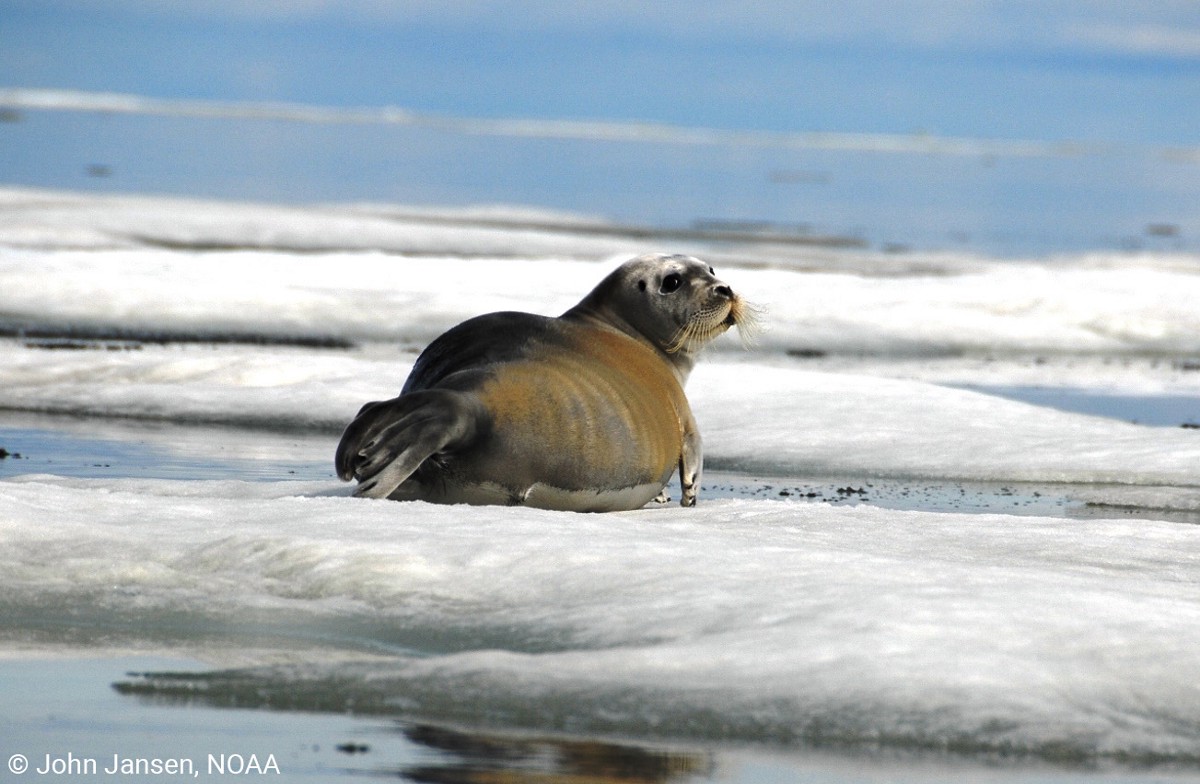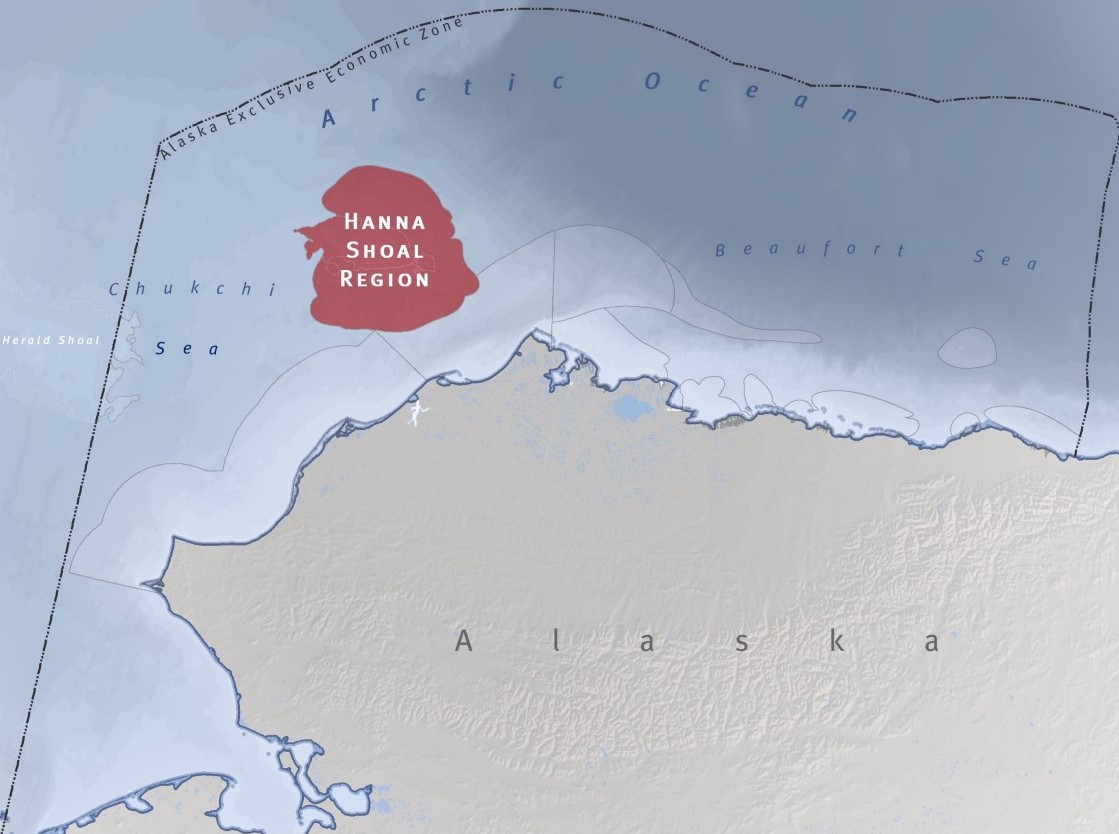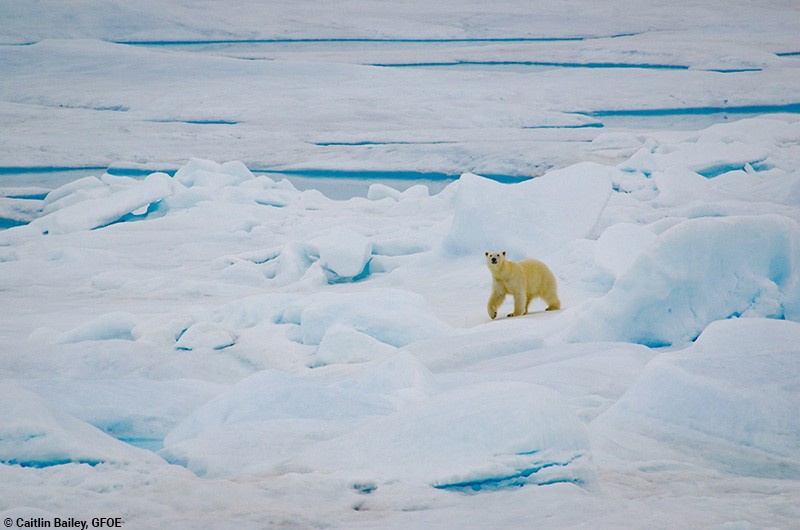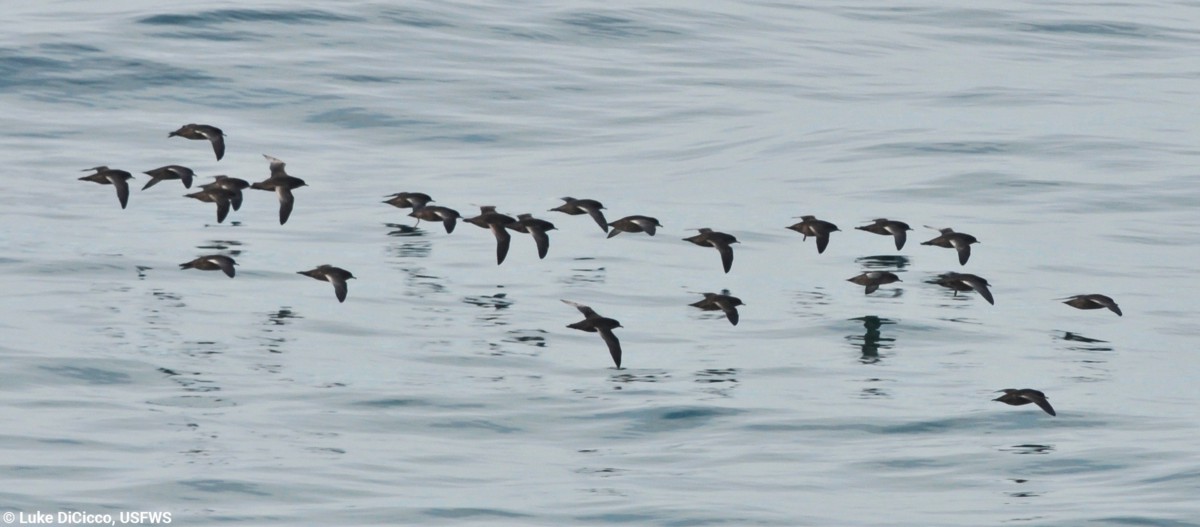Despite my training and passion as a seabird biologist, it was the walruses and polar bears that had me giddy about spending summers in the Chukchi Sea, located 160km (100 miles) offshore from Alaska’s northwestern coast. Scanning the water for birds from my observation post on the port side of the ship’s bridge was the perfect cover to look for a flash of tusk, a quivering pile of brown bodies or the lumbering stride of a long-legged polar bear crossing an ice floe.
I knew my chances would be good on Hanna Shoal because warmer waters flowing north from the Bering Sea divert around this 10m (30ft)-high hill on the sea floor, letting cold water and ice formed during the winter persist as late as September, even in this era of declining sea ice. What better place for them to lounge between dives for clams or creep up on snoozing seals than a floating shelf of ice and snow?

The Hanna Shoal supports charismatic marine mammals such as walrus, polar bears and bearded, ringed and spotted seals. (NOAA/John Jansen)
For those following marine concerns in the Pacific Arctic, Hanna Shoal has an immediate association with walruses. But it also supports charismatic marine mammals such as polar bears and bearded, ringed and spotted seals. All of these marine mammals rely on the sea-ice habitat, ice-associated Arctic cod and rich beds of clams that are plentiful in the Hanna Shoal region, making the biological link straightforward for us all to understand. They are also crazy cute with those big eyes and bristly, whiskery faces.
Let’s not forget, however, our feathered friends. There are millions of them partying on the southern and western flanks of Hanna Shoal in the summer, and most of them are there for the zooplankton. Short-tailed shearwaters fly past in dark, undulating streams of hundreds and thousands that make the horizon shimmer. Crested auklets are so sure they can get their daily bread – er, copepods – that Dr. Kathy Kuletz (U.S. Fish and Wildlife Service) and I suspect they are spending two to three weeks there being flightless as they molt and recover from the rigors of the breeding season. When I started counting them each August, they would leap up and fly off if our ship caught them off guard as they surfaced from a dive. By September, the looks of alarm were followed by scuttling along the tops of the waves and an eventual underwater escape. In October, they were back to their agile and frantic flight.

The Hanna Shoal region lies in the Chukchi Sea off the north coast of Alaska. (Audubon)
Shearwaters and auklets are joined later in the open-water season by Kittlitz’s and ancient murrelets, phalaropes and eventually rosy Ross’s gulls. This annual convergence of plankton-eating seabirds in September from both the Bering Sea and the high Arctic has been documented with data loggers on individual birds and extensive at-sea surveys. The diversification of the seabird community over the past four decades supports the hypothesis that zooplankton and the animals that feed in the water column are gaining a bigger “market share” of this region’s resources as annual ice cover declines.
What is the trade-off, then, if more of the energy that fuels this Arctic ecosystem is being consumed before it reaches the seafloor? What happens to the walruses and bearded seals that rely on bottom-dwelling organisms which, in turn, have made a living harvesting the riches of ice algae and phytoplankton that rain from above? For now, they continue to benefit from the large beds of bivalves and polychaetes that blanket the muddy bottom under the still waters of Hanna Shoal. They remain on their floating platforms for as long as they can and lately have been moving to shore once the ice is gone – but make 500km (300-mile) round-trip commutes to Hanna Shoal. The seafloor contours that steer away warm waters maintain this frigid oasis when all other shelf ice melts or recedes.

A polar bear travels across the sea ice. (GFOE/Caitlin Bailey)
My scanning was rewarded at least once per season with the sight (and even the pungent scent, if the winds were right) of great aggregations of some of the most mythical creatures that exist on our planet – walruses! And, typically if you see one walrus, there is a very good chance that five to one hundred of its closest friends are nearby. Polar bears, in contrast, are loners, but no less heart-stopping when I see one casually strolling over the jumbles of ice on its frozen floating island.

For Short-tailed Shearwaters, the reliability of food in the Hanna Shoal region is worth commuting from their breeding grounds in Australia. (USFWS/Luke DiCicco)
Hanna Shoal and the surrounding waters fuel up its seasonal and year-round residents for the long Arctic winters, from tiny seabirds the size of my fist, with comical crests bobbing on their foreheads, to marine mammals that individually outweigh my whole family combined. For short-tailed shearwaters, the reliability of food is worth commuting from their breeding grounds in Australia. That remarkable productivity cranked out primarily during the four months (and lengthening) of the open-water season makes Hanna Shoal critical to the diversity of the Pacific Arctic as we know it.
The views expressed in this article are those of the author and do not necessarily reflect the editorial policy of Arctic Deeply.
This article first appeared on Vital Arctic Ocean Areas, a blog about important marine areas in the U.S. Arctic identified by science.
